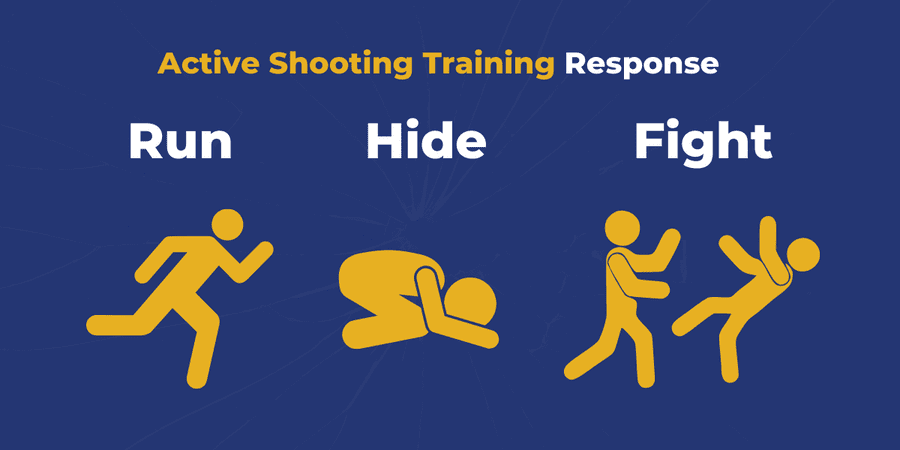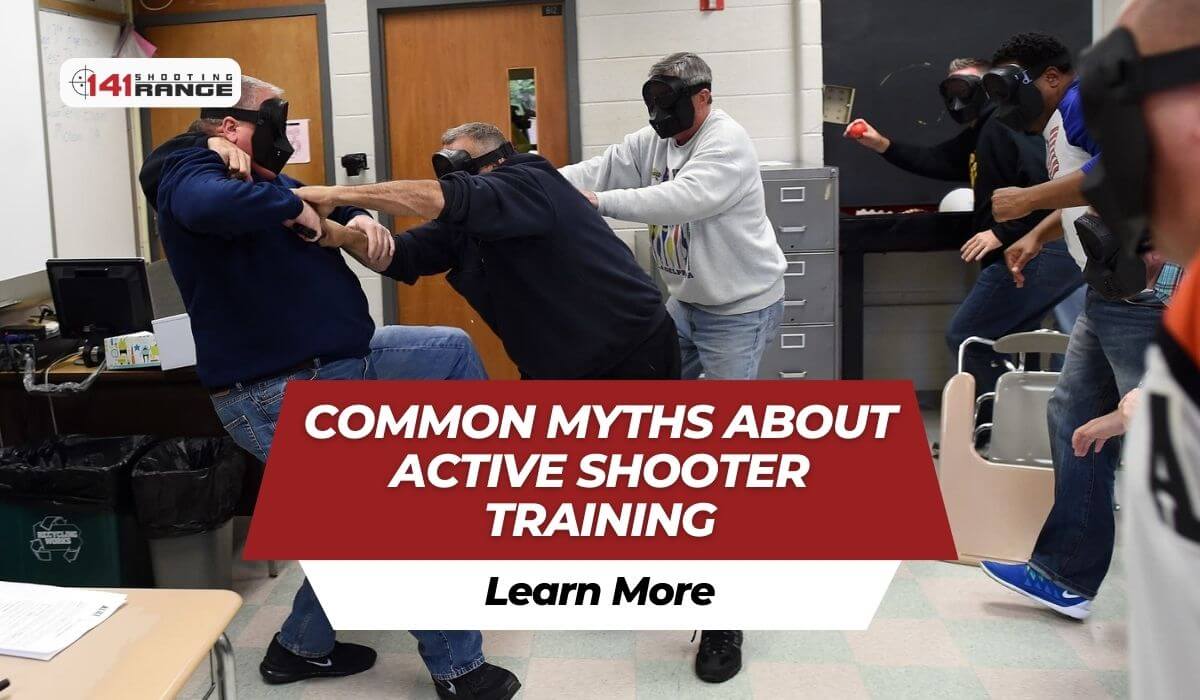Exploring the Key Components and Purposes of Efficient Active Shooter Training Programs
Energetic shooter training programs are critical in furnishing people and companies with the essential abilities to respond effectively to potential hazards. These programs incorporate vital elements, such as the "Run, Hide, Fight" technique, practical situation simulations, and interaction methods, promoting an atmosphere of readiness. Additionally, they highlight emotional strength to assist participants browse high-stress circumstances. As we explore the details of these training programs, it ends up being noticeable that comprehending their thorough nature is crucial to boosting precaution and reaction abilities. What certain components genuinely define their effectiveness?
Significance of Energetic Shooter Training
Energetic shooter training programs are important for boosting readiness and action despite possible hazards. These programs aim to gear up people, companies, and communities with the knowledge and abilities required to efficiently react to energetic shooter scenarios. The increasing frequency and severity of such incidents underscore the importance of proactive procedures, as prompt and educated feedbacks can significantly alleviate damage.

Additionally, these programs can aid alleviate the anxiety and anxiety that commonly accompany conversations about possible hazards. By supplying structured advice and practical methods, people gain confidence in their capacity to react properly. Inevitably, the value of active shooter training depends on its possible to save lives, decrease injuries, and grow a ready and resistant neighborhood with the ability of facing unforeseen obstacles.
Key Parts of Training Programs
Reliable active shooter training programs typically integrate a number of key components designed to prepare participants for real-world situations. The very first part is thorough education on the nature of energetic shooter events, including data, situation studies, and mental factors that affect aggressors. This theoretical structure is essential for cultivating understanding and understanding amongst individuals.
Following, programs typically consist of training on individual safety and security steps, highlighting the "Run, Hide, Battle" approach. Individuals find out exactly how to examine their environment, make quick decisions, and take ideal activities during a dilemma. Additionally, the inclusion of reliable interaction skills is important, as individuals have to understand just how to report events and share essential details with law enforcement.
An additional important component is the involvement of police or safety and security specialists, who give understandings into tactical actions and the value of participation throughout a crisis. Programs should resolve the emotional after-effects of an energetic shooter situation, offering approaches for dealing and healing.
Last but not least, continuous training and correspondence course are crucial to guarantee that understanding continues to be existing and individuals feel great in their abilities. Together, these vital elements produce a well-shaped training program that equips people to respond effectively to an energetic shooter event.
Realistic Scenario Simulations
Reasonable scenario simulations are a crucial facet of energetic shooter training programs, providing individuals with the possibility to take part in hands-on practice that mirrors potential real-life circumstances. These simulations improve the training experience by developing an immersive atmosphere where people can apply academic understanding in useful settings.
With the usage of role-playing, mock scenarios, and specialized training facilities, participants experience the immediate difficulties and stress factors related to an energetic shooter event. This approach of training promotes quick decision-making, team effort, and the application of safety procedures under stress. It allows responders to develop important skills such as situational understanding, threat analysis, and effective emptying treatments.
Additionally, practical simulations aid to determine possible weak points in participants' responses, allowing instructors to supply targeted responses and improve general preparedness. The unification of differing situations, including different locations and attacker accounts, better enriches the training experience, ensuring that participants are well-appointed to take care of a series of prospective scenarios.
Eventually, these simulations offer not just to instruct but likewise to construct self-confidence among participants, fostering a sense of preparedness that is important for efficient emergency situation feedback in the face of an active shooter hazard. active shooter training.
Communication Approaches in Training
Clear interaction is crucial in active shooter training programs, as it directly influences the performance of reaction initiatives during a dilemma. Training individuals must comprehend the procedures and treatments that will assist their activities if encountered with an energetic shooter scenario. Establishing clear lines of interaction makes certain that all Learn More individuals included can pass on info promptly and properly.

Moreover, training programs ought to highlight the significance of energetic listening. Eventually, efficient interaction strategies are necessary for preparing individuals to react emphatically and cohesively in the face of an active shooter event.
Mental Readiness Techniques
Psychological readiness techniques are significantly recognized as vital components of energetic shooter training programs. These methods intend to equip individuals with the mental strength visit this website required to respond effectively in high-stress scenarios. By fostering an attitude attuned to possible dangers, individuals can better handle fear, anxiety, and confusion throughout crucial occurrences.
Key emotional readiness methods consist of scenario-based training and stress shot workouts. Scenario-based training submerses participants in sensible simulations that imitate the mayhem of an energetic shooter event, enabling them Get More Info to practice decision-making under stress. This direct exposure aids build experience with emergency situation methods, improving second-nature feedbacks.
Tension shot includes progressive direct exposure to stress-inducing circumstances, permitting people to establish coping mechanisms. This can consist of breathing exercises, visualization strategies, and cognitive restructuring to reframe adverse thoughts. By incorporating these techniques, training programs can grow a feeling of self-confidence and control, which is vital in situation scenarios.
Additionally, post-incident mental support is vital to resolve the psychological after-effects of an active shooter event. Integrating psychological health and wellness resources right into training programs not just prepares people for prompt feedbacks however also promotes lasting psychological health, ultimately adding to a more secure and extra resilient setting.
Conclusion
